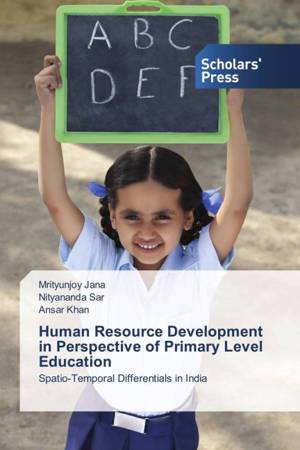
- Afhalen na 1 uur in een winkel met voorraad
- Gratis thuislevering in België vanaf € 30
- Ruim aanbod met 7 miljoen producten
- Afhalen na 1 uur in een winkel met voorraad
- Gratis thuislevering in België vanaf € 30
- Ruim aanbod met 7 miljoen producten
Zoeken
Human Resource Development in Perspective of Primary Level Education
Spatio-Temporal Differentials in India
Mrityunjoy Jana, Nityananda Sar, Ansar Khan
Paperback | Engels
€ 64,45
+ 128 punten
Omschrijving
In recent years spatial variability in educational attainment has threatened the sustainability of primary education system of India. Methodology currently available to assess the state level inequality in educational development of a nation, particularly in case of primary education, is still inefficient to help policy making process. Towards this end, the present book pays attention to the assessment of spatial structure of development in primary education across 35 Indian states and Union Territories (UTs). The study considers state wise values for each of the four components of a composite educational development index (EDI) computed by MHRH & NUEPA from surveyed data on 24 indicators divided into four groups , representing access to school , availability of infrastructural facilities. This book argues that simple averaging of the four component EDIs is less practicable than a weighted average in computing the composite EDI.
Specificaties
Betrokkenen
- Auteur(s):
- Uitgeverij:
Inhoud
- Aantal bladzijden:
- 128
- Taal:
- Engels
Eigenschappen
- Productcode (EAN):
- 9783639863154
- Verschijningsdatum:
- 30/12/2015
- Uitvoering:
- Paperback
- Afmetingen:
- 150 mm x 220 mm
- Gewicht:
- 187 g

Alleen bij Standaard Boekhandel
+ 128 punten op je klantenkaart van Standaard Boekhandel
Beoordelingen
We publiceren alleen reviews die voldoen aan de voorwaarden voor reviews. Bekijk onze voorwaarden voor reviews.








